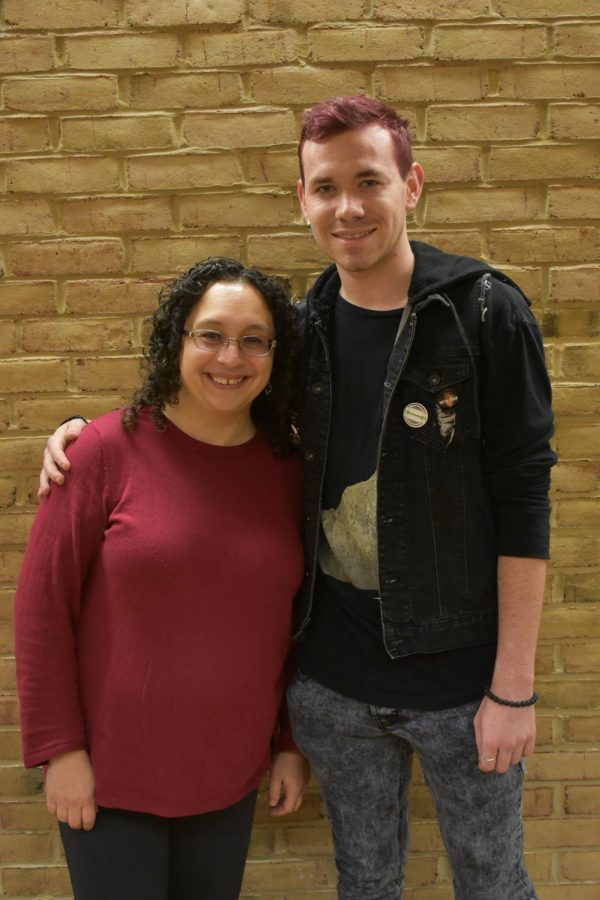LGBTQ+ students have school support system
Garrett Hutchinson, a second-year psychology student and president of the Gay-Straight Alliance, has discussed LGBTQ+ issues with Rainbow Network member Rachelle Tannenbaum, a professor in the psychology department.
November 1, 2018
Students who identify as LGBTQ+ can find support through specially trained administrators, faculty and staff who are part of a campus-wide Rainbow Network.
The creators of the 5-year-old AACC Rainbow Network, or ARN, set it up so faculty and staff could understand that the campus community is diverse, “so that the students would know there were welcoming people in the college … if they just wanted to talk [or] if they needed resources,” Lynne Edwards Tucker, coordinator of the AACC Rainbow Network, said.
Edwards said some LGBTQ+ students have come to her to discuss the issue of coming out to their parents. “We actually had a student who left home as Ralph and in their car changed into Susan. [Her] parents did not know. At school we knew and know her as Susan, so her big issue was, ‘How and when do I come out?’ [Coming out at home] could have been really devastating for her, so she just chose to stay in the closet.”
Second-year psychology student Garrett Hutchinson, who said his parents know he is gay, said he has gone to professors in the Rainbow Network on multiple occasions.
“People look at me and they automatically know I’m some level of queer or gay,” said Hutchinson, president of the student club Gay-Straight Alliance. “So, it’s not coming out that’s hard for me; it’s still going through life with very little knowledge on how I’m supposed to do this or react to this. It’s very hard to describe, but there are subtle things that you never really thought of when you came out that would be different. The Rainbow Network is trained to help people in the [LGBTQ+] community to help them go through it, to help them understand.”
Edwards added that one of the biggest issues LGBTQ+ students talk to her about is homelessness. “I’ve had a student who, when they did come out, immediately was kicked out [of her parents’ home]. So, as a group, we got together and helped her as best we could.”
“Regardless of how long somebody has been out in the LGBTQ+ community, there’s always struggles,” Hutchinson said. “It’s very different and as you continue to grow older you experience all these different struggles that you didn’t expect to ever experience before, so it’s really cool that the Rainbow Network is there as a fallback.”
Faculty and staff must take two training sessions, called ARN 1 and ARN 2, to become part of the Rainbow Network, according to English professor Robert Hurd, an ARN 1 instructor.
“Essentially, it’s a three-hour session where we talk about the purpose of having such a network, why people want to join it and so forth,” Hurd said.
According to Hurd, those in the training discuss LGBTQ+ terminology, the campus climate surrounding people who identify as LGBTQ+ and straight privilege.
Students can find a list of the 101 faculty and staff members who are part of the Rainbow Network on the AACC website at www.aacc.edu.












